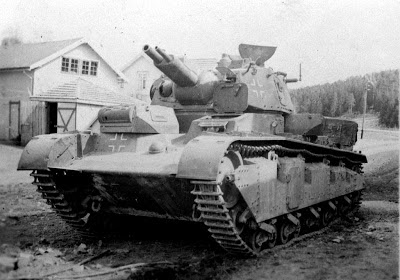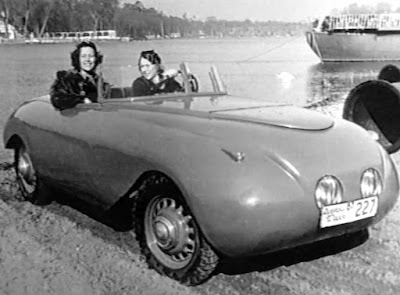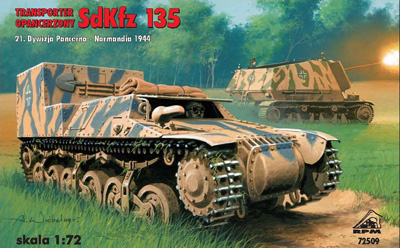During the 1920s and 1930s, a number of countries experimented with very large, multi-turreted tanks. The British built a single example of the Vickers A1E1 Independent in 1926. This inspired the Soviet T-35, which was built in limited numbers from 1933.
Development of the Neubaufahrzeug (German for "new construction vehicle" - a cover name) started in 1933 when the then Reichswehr gave a contract for the development of a Großtraktor ("heavy tractor") to both Rheinmetall and Krupp. Großtraktor was a codename for the development of a heavy tank, Germany being still forbidden to develop tanks under the terms of the Treaty of Versailles. The technical details of the Vickers A1E1 Independent were then available to the Germans as they were amongst the information sold to them by a British officer, Norman Baillie-Stewart, who acted as a German spy before his arrest in 1933.
| Neubaufahrzeug | |
| Type | Tank |
| Place of origin | Nazi Germany |
| Service history | |
| In service | 1940 |
| Used by | Nazi Germany |
| Wars | World War II |
| Production history | |
| Designer | Rheinmetall |
| Designed | 1933–34 |
| Manufacturer | Rheinmetall |
| Produced | 1934–36 |
| Number built | 5 |
| Specifications | |
| Weight | 23.41 tonnes (23.04 long tons; 25.81 short tons) |
| Length | 6.6 m (21 ft 8 in) |
| Width | 2.19 m (7 ft 2 in) |
| Height | 2.98 m (9 ft 9 in) |
| Crew | 6 |
| Armor | 13–20 mm (0.51–0.79 in) |
Main
armament | 75 mm KwK L/24 or 105mm howitzer |
Secondary
armament | 37 mm KwK 36 (L/45) 2x 7.92 mm MG 13/34 |
| Engine | 290 hp BMW Va or 300 hp Maybach HL 108 TR |
| Suspension | coil springs |
Operational
range | road: 120 kilometres (75 mi) |
| Speed | road: 25 km/h (16 mph) |
The Rheinmetall and Krupp designs resembled each other to a great extent, the main difference being the weapons placement. Each had a main turret armed with a 75 mm KwK L/24 main gun and secondary 37 mm KwK L/45. Rheinmetall's design mounted the second gun above the 75 mm KwK L/24, while the Krupp design had it mounted next to the 75 mm KwK L/24. Both designs had a secondary turret mounted to the front and the rear of the main turret. These turrets were slightly adapted Panzer I turrets, with the standard machine gun armament.
Rheinmetall's design was designated PzKpfw NbFz V (PanzerKampfwagen NeubauFahrzeug V), and the Krupp design PzKpfw NbFz VI. It was intended that these designs would fulfill the role of heavy tank in the armored forces, but the design proved to be too complex and unreliable for this role. Nevertheless, development continued in order for the nascent German military to gain experience with multi-turreted tanks.
In 1934 Rheinmetall built two mild steel prototypes, both with their own turret design. Three more prototypes were built with proper armor and the Krupp turret in 1935 and 1936.
Though these tanks were never placed in production, they provided a propaganda tool for Nazi Germany, for example being shown at the International Automobile Exposition in Berlin in 1939.
This propaganda role was extended with the German invasion of Norway, when Panzer Abteilung z.b.V. 40 (zur besonderen Verwendung - "for special purpose") was formed for supporting the invasion of Norway, and the three Neubaufahrzeuge were assigned to that unit. One vehicle was assigned to Kampfgruppe Fischer advancing north through the Østerdalen Valley, while the other two were assigned to Kampfgruppe Pellengahr advancing up the Gudbrandsdalen Valley.
The one assigned to Kampfgruppe Fischer was immobilized with mechanical problems on its way to Lillehammer, while one of the two assigned to Kampfgruppe Fischer also had mechanical problems just north of Lillehammer. Only one tank actually made it to the front; it was immediately put in action with the German force advancing up the Gudbrandsdalen Valley with other elements of Panzer Abteilung z.b.V. 40.
The Neubaufahrzeuge first saw combat against British and Norwegian positions on April 22, near the small town of Balberg at the far south end of the Gudbrandsdalen Valley. The British Expeditionary Force was equipped with 0.55 inch calibre Boys Anti-tank rifles that easily penetrated the Neubaufahrzeug. After dozens of hits, including one that killed a crew member, the tank retreated and the crew was hesitant to advance further. Other German units pushed further through, flanking the British forces and forcing them to retreat.
It is unclear what happened to the tanks after the Norway campaign, but none of them survived the war. The surviving vehicles were ordered scrapped in 1941, and this took place in 1942 according to documents captured by the British in 1945. The dates when the vehicles were scrapped are unclear, but it is thought that the beginning of the construction of the Sturer Emil prototypes dates from the same time.
According to contemporary German sources, three NbFz was attached to the 1st Panzer Army and destroyed in battle with Soviet BT-7 tanks in present day Ukraine in June 1941.
The last known surviving Neubaufahrzeuge was used by a Lehr instruction unit in late 1944 as a target for training the Volkssturm in the use of the Panzershreck 43 and other anti-tank weapons.
All that survives of these tanks is a small number of running gear parts, preserved in the Gudbrandsdal Krigsminnesamling (Gudbrandsdal War Memorial collection), at Kvam in Norway.















































































